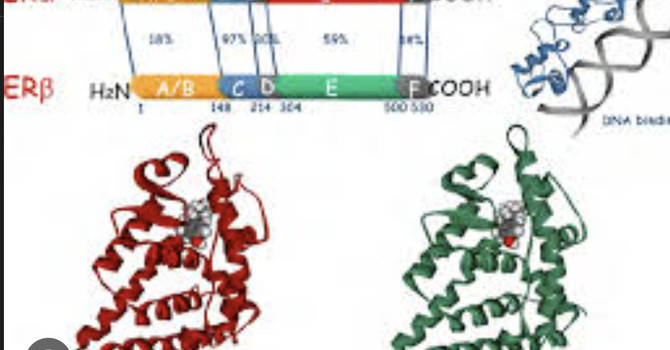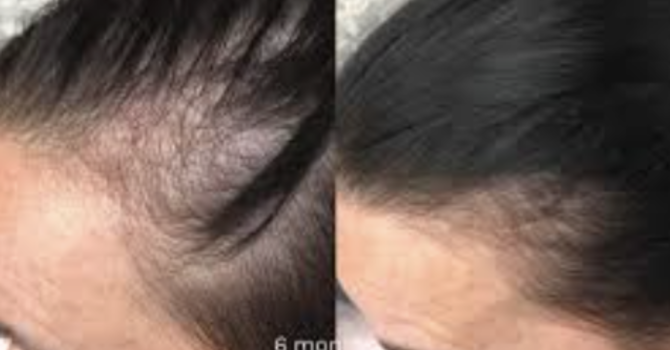
If you're in your late 30s and starting to notice changes that don’t quite make sense, such as irregular periods, sudden anxiety, or restless nights, you may be entering early perimenopause. While most women expect this transition closer to their late 40s or 50s, hormonal shifts can begin much earlier, often catching women off guard during their most active years.
Understanding what’s happening physiologically is the first step toward restoring balance and well-being.
The Progesterone Connection: The First Domino to Fall
What most women and many healthcare providers don’t realize is that progesterone is usually the first hormone to decline, not estrogen. This occurs because of anovulation, when the ovaries begin to skip ovulation more often even while cycles continue.
Without ovulation, no corpus luteum forms, and progesterone production drops. Estrogen then becomes unopposed, leading to what’s often called “estrogen dominance.” The real issue isn’t too much estrogen; it’s not enough progesterone. Estrogen may be normal or even low, but without sufficient progesterone, the ratio becomes unbalanced. A more accurate description is “progesterone deficit.”
Research confirms that progesterone deficiency appears early in the menopausal transition and contributes to irregular and heavy bleeding as anovulatory cycles become increasingly frequent.¹
Early Signs That Aren’t Always Obvious
Many women in their late 30s dismiss these changes as stress or aging, but they are clear hormonal signals your body shouldn’t ignore.
Irregular Periods
Cycles may become unpredictable, shorter, longer, heavier, lighter, or skipped entirely. These changes reflect the decline in progesterone that regulates normal cycle rhythm.
Sleep Disturbances
If you’re waking in the middle of the night or finding it hard to fall asleep despite exhaustion, low progesterone may be involved. Progesterone supports deep, restorative sleep through its metabolite allopregnanolone, which acts on GABA receptors in the brain. When levels drop, that calming effect disappears. Up to 60% of women experience sleep disruption during the menopausal transition.²
Anxiety and Mood Changes
Many women describe new or worsening anxiety, emotional volatility, or panic sensations. This is biochemical, not psychological. Estradiol variability combined with low progesterone significantly affects mood regulation.³ Progesterone acts as a natural anxiolytic, calming the nervous system through the same GABA pathways that promote sleep.
Fertility Changes
Anovulatory cycles mean no egg is released, so conception is not possible during those months, even if periods continue. For those still trying to conceive, progesterone testing around day 19 to 21 can help confirm ovulation. A level above 10 ng/mL generally indicates that ovulation has occurred.
Other Common but Overlooked Symptoms
-
Brain fog and memory lapses: Linked to fluctuating estrogen and progesterone.⁴
-
Migraines or headaches: Often worsen with hormonal swings, especially declining estrogen.⁵
-
Joint pain and stiffness: Hormonal shifts influence inflammation and musculoskeletal stability.
-
Heart palpitations: Hormone fluctuations can affect cardiac rhythm and perception.
-
Weight changes: Metabolic slowdown and altered fat distribution, particularly around the midsection.
-
Heavy bleeding: Unchecked estrogen thickens the uterine lining without progesterone to regulate shedding.
What to Do: A Functional Approach
You don’t have to wait it out or normalize suffering. With a functional and evidence-based approach, this phase can be managed effectively.
Progesterone: Often All You Need in Early Perimenopause
For many women in their late 30s, progesterone replacement alone can restore balance and resolve symptoms. During early perimenopause, estrogen levels may still be adequate or fluctuating while progesterone is consistently low. Replacing what’s missing addresses the imbalance at its source.
Clinical evidence shows that progesterone therapy improves sleep, reduces night sweats, hot flashes, and mood changes in perimenopausal women.6
Bioidentical progesterone, taken orally or applied topically, supports:
-
Hormonal equilibrium with estrogen
-
Deep sleep via GABA activation
-
Mood stability and anxiety relief
-
Cycle regulation and reduced heavy bleeding
-
Uterine protection
-
Bone health maintenance
Skip the Testing (Unless You’re Trying to Conceive)
Routine hormone testing isn’t necessary for diagnosis or management. Hormones fluctuate widely during perimenopause, making one-time lab values unreliable. Treatment based on symptoms is often more accurate. Testing only matters if conception is the goal.
Support Your Body Through Lifestyle
Hormone therapy works best when combined with foundational support:
-
Prioritize sleep: Keep a cool, dark room and a consistent schedule.
-
Manage stress: Chronic stress suppresses progesterone production.
-
Balance blood sugar: Stable glucose supports hormone regulation.
-
Maintain muscle: Strength training helps preserve metabolism and bone density.
-
Reduce inflammation: Limit processed foods, sugars, and alcohol.
The Bottom Line
Experiencing perimenopause in your late 30s can feel disorienting, but it’s not unusual and it’s not something you have to endure. The key is recognizing that progesterone deficiency is often the first step in the transition, and it’s correctable.
With the right treatment plan, including bioidentical progesterone and lifestyle support, you can restore equilibrium and feel like yourself again.
Perimenopause is not an illness. It’s a natural shift that deserves medical understanding and proactive care.
Dr. Anat Sapan MD, specializing in peri/menopause care, advocates for a personalized approach combining Bioidentical Hormone Replacement Therapy with lifestyle strategies. Her telemedicine services in California, Florida, Illinois and New York. I aim to help women overcome menopausal symptoms and enhance their quality of life.

Anat Sapan, MD
Contact Me



